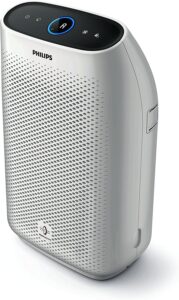Cleaning your room isn’t just a good habit your parents taught you. Regularly cleaning your home can minimise dirt, dander, and indoor particles that can make you sick or cause allergies.
Here are a few simple things you can do to fight indoor air pollution.
Keep your floors and surfaces clean in your home by dusting, sweeping, and vacuuming regularly. If you have pets, dander can collect even faster and leave your family and guests sniffling and sneezing.
Use a vacuum cleaner with a HEPA filter that will capture and reduce debris collected in rugs, carpets, and floors. HEPA, or High-Efficiency Particulate Air, filters can trap 99.97% of particles that are 0.3 microns (for reference, that’s smaller than a red blood cell).
The more tiny particles you can remove from the air in your home, the cleaner the air will be.
Get in the habit of regularly replacing your furnace filters, vacuum filters, and air purifier filters—or cleaning washable filters.
Furnace filters should be replaced every 3 months or so—more often if you have pets, allergies, or regularly track in dust and dirt from outside. I like to get reminders from Amazon Alexa—just say, "Alexa, remind me to change the furnace filter every three months." Magic.
Vacuum filters can be replaced on a regular schedule too or whenever they appear soiled. Most air purifiers have a status light that turns red when your filter needs to be replaced or cleaned. Don't ignore it—buy some filters to have on hand and take care of it right away. You'll literally breathe easier.
Dust mites, dead skin cells, and all kinds of icky stuff can hide in your bedsheets. Washing your linens, curtains, and other fabric throughout your house can keep them fresh and free of debris.
Aim for washing temperatures of 60°C and up. You can also find dust mite-proof pillow cases and bedding that can make the job easier.
Tracking dirt in the house can add to air pollutants in your carpets and rugs. Store your shoes in a closet or on a rack where you can keep the dirt contained.
Then wipe the shoe rack down and vacuum the space at least once a month to keep the area clean.
There’s no need to hang on to old produce or any perishable food past its prime. Mould growing in your fridge or cabinets can affect the air in your kitchen and the rest of your home.
The good news is, you can prevent food waste by planning your meals ahead, eating out less, or buying groceries in smaller portions.

